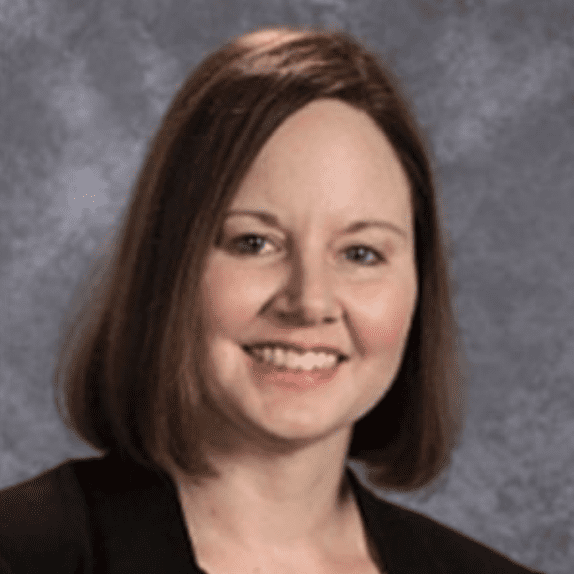
Amy M. Via
Glencliff Elementary School
Nashville, Tennessee
amy.via@mnps.org
Best Practices
1) As an AP, I believe that building relationships with teachers, students, and parents is a practice that cannot be overlooked. An administrator needs to know and care about the people they serve. Once others trust in the relationship, they are more willing to have open and honest conversations. They are also more willing to have buy-in with new strategies and initiatives.
I build relationships with the teachers in a variety of ways. I listen intently and follow through with commitments in a timely manner. I also focus on praising them when I notice positives or attempts at new efforts. I am mindful to use phrases such as “Thank you for” and “I am proud of you for.” Additionally, I recognize and celebrate staff birthdays by ensuring that each faculty member receives a birthday card that is signed by each administrator. Visibility is also important in order to build relationships. I pop in to classrooms regularly to say good morning to the teachers and students.
Regarding student relationships, I intentionally place myself at the car rider line to greet all of the children each morning and to say goodbye to them each day. I enact a check-in, check-out system with children in need of additional academic or behavioral support, and I also enjoy giving recognition to students who have made various gains. I give shout-outs to students via the announcements regularly, and I make an intentional effort to each lunch with the children so that I can build stronger relationships with them.
Parents also deserve to feel valued by the administration. As previously mentioned, I place myself in the car rider area so that I am visible. Doing so helps me to have quick face-to-face conversations with families. I am intentional about sharing positives often, but also use this time to share information when a child has a difficult day. When parents call or e-mail, I have a personal expectation to communicate within 24-hours if not the same day. During my time at Glencliff, I have established a positive rapport with the parents. As an example, recently a parent who was perceived as difficult at the start of my time at the school requested to meet with me. The parent shared a concern, but then stated that she “hopes I do not leave Glencliff to become a principal soon because [she] knows that I take care of things.” This statement was a meaningful compliment and attests to the relationships I strive to create with the parents.
Through readings and leadership courses, observing seasoned leaders, and reflecting on my personal leadership style, I have come to recognize and believe in the importance of relationship building. It is at the forefront of my daily interactions, and I believe that building relationships is at the foundation of successful leadership.
2) Shared decision making is another valuable practice. I recognize I do not always have the best ideas or solutions. Encouraging others to share their thoughts strengthens the school. Shared decision making helps others have a clearer understanding of why decisions are made, and people are more apt to have buy-in.
One real time example of shared decision making is the intentional use of data to guide instruction. This year, I have been mindful of strengthening the school’s ELA scores on TN Ready. The school has made gains with regard to growth and is a level 5 school based on 2019 TVAAS. However, only 21 % of third and fourth grade students were on-track and mastered in reading via 2019 TN Ready. Therefore, I enacted a plan.
I met with third and fourth grade reading teachers in November 2019. First, each team reviewed the TN Ready Blueprints and created an MTSS focus calendar of standards to teach. Additionally, teams reviewed fall MAP-Reading data and identified students who were on the cusp of scoring on-track or mastered. Next, I introduced a skeleton plan that involved the teaching of the standards from the focus calendar during MTSS, and the administering of a CFA to track student mastery. Mastery was defined as scoring 80% or higher. It was crucial that students who did not show mastery be given reteaching and retesting opportunities. Teams were each given voice in how the reteaching and retesting would be structured. The plan that evolved includes a two-week cycle. During week one, the identified standard is taught during MTSS and the CFA is administered. During week two, the reading teachers reteach and retest using a new CFA. I meet with the teachers periodically for check-ins; areas of need are considered, and adjustments are made. For example, it was realized that all teachers need access to the CFA data. Therefore, a SharePoint Excel document was created.
To date, the plan has shown academic improvements. With mastery of CFAs, third grade has increased 45%, and fourth grade has increased 20%. Preliminary MAP-R results also show gains. Fourth grade had 9% of students in quintiles 4 and 5 in November, which almost doubled to 17% by February.
The skeleton plan that I shared with the teachers was a big ask and had many components. However, because the teachers had voice in the implementation, as well as opportunities for feedback, it has been fully implemented and the data looks promising. Shared decision making is powerful, and I am proud of the work the teachers have accomplished thus far.


